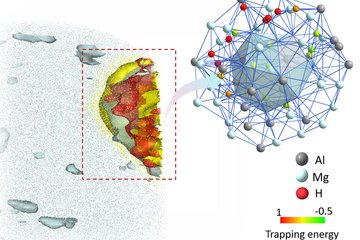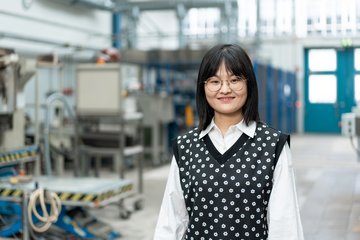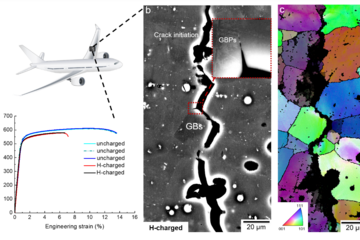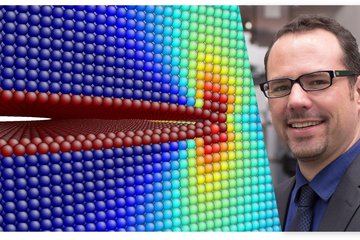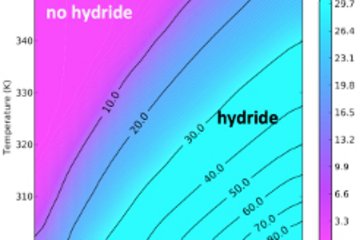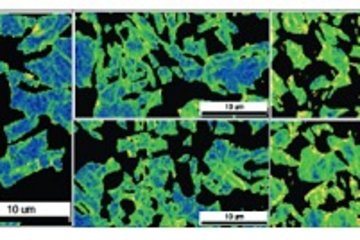All genres
221.
Talk
From Atomistic Understanding to Engineering Design of Advanced Medium and High Manganese Steels. 4th International Conference on medium and high Manganese steels, Aachen, Germany (2019)
222.
Talk
Electron diffraction techniques in scanning electron microscopy: fundamentals and state-of-the-art applications of electron backscatter diffraction (EBSD) and electron channelling contrast imaging (ECCI). 27th Annual Meeting of the German Crystallographic Society (DGK), Leipzig, Germany (2019)
223.
Talk
In-situ electron channeling contrast imag-ing (ECCI) to observe the effect of hydro-gen in TWIP steels and superalloys. Physikalisches Kolloquium der Universität Wien, Wien, Austria (2019)
224.
Talk
Correlation of Microstructures and Thermal Conductivity of the Thermoelectric Material Ag16.7Sb30Te53.3. North American Thermoelectric workshop, Northwestern University, Eanston, Chicago, IL, USA (2019)
225.
Talk
The thermal conductivity of Ag16.7Sb30Te53.3 bulk thermoelectric with high density of planar faults. 38th/4th International and Asian Conference on Thermoelectrics , Gyeongju, South Korea (2019)
226.
Talk
Introduction to (3D)-EBSD (what can EBSD do for you ?). Bruker EDS User Meeting, Berlin, Germany (2019)
227.
Talk
The importance of microstructures for the energy conversion efficiency of materials for photovoltaic and photothermic applications. Development of Photovoltaic Solar Energy in Africa by the Year 2030, Abidjan, Republik Côte d’Ivoire (2018)
228.
Talk
Correlation of crystallographic defects in Ag16.7 Sb30Te53.3 thermoelectric bulk materials with their thermoelectric properties. MRS Fall Meeting & Exhibit, Boston, MA, USA (2018)
229.
Talk
Controlled electron channelling contrast imaging, cECCI, for quantitative and in-situ characterization of lattice defects in bulk samples of metals and minerals. 19th International Microscopy Conference, Sydney, Australia (2018)
230.
Talk
Influence of microstructure of Ag16.7Sb30Te53.3 bulk thermoelectric on their performance. 37th | 16th International and European Conference on Thermoelectrics, Caen, France (2018)
231.
Talk
Influence of microstructure of Ag16.7Sb30Te53.3 bulk thermoelectric on their performance. 1st International Meeting on Alternative & Green Energies (1st IMAGE'18), Mohammedia, Morocco (2018)
232.
Talk
Understanding the correlation of crystallographic character and corrosion behaviour of grain boundaries in a stainless steel using large-area 3D EBSD. RMS-EBSD conference , Plymouth, UK (2018)
233.
Talk
Combination of nano-indentation and electron channeling contrast imaging (ECCI) to understand the interaction of hydrogen and dislocations in a high-Mn TWIP steel. Nanobrücken 2018, Erlangen, Germany (2018)
234.
Talk
Mechanical properties of Mg and Mg alloys during and after high current density pulses. 2nd Conference and Exhibition on Light Materials, Bremen, Germany (2017)
235.
Talk
Observation and quantification of elastic and plastic strain using SEM-based diffraction methods, Part 1. 7th international conference deformation and fracture of materials and nanomaterials, Moscow, Russia (2017)
236.
Talk
Observation and quantification of elastic and plastic strain using SEM-based diffraction methods, Part 2. 7th international conference deformation and fracture of materials and nanomaterials, Moscow, Russia (2017)
237.
Talk
Quasi in-situ characterization of dislocation structure evolution during low cycle shear fatigue of high manganese steel. 25th International Conference on Materials and Technology, Portorož, Slovenia (2017)
238.
Talk
Integrated experimental and simulation analysis of stress and strain partitioning in dual phase steel. Nanomechanical Testing in Materials Research and Development VI, Dubrovnik, Croatia (2017)
239.
Talk
Resolution of EBSD in light metals: how good are we? 25th International Conference on Materials and Technology, Portorož, Slovenija (2017)
240.
Talk
Using orientation microscopy to explore the correlation of materials properties and microstructures. 25th International conference on materials and technology, Portorož, Slovenia (2017)
